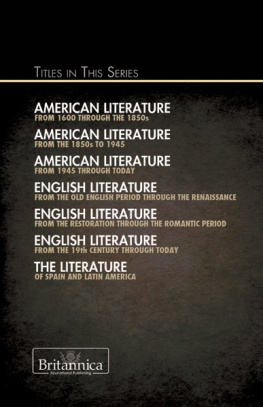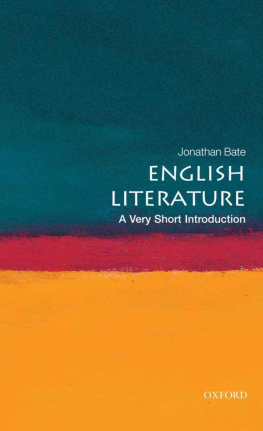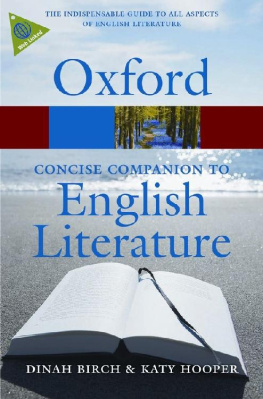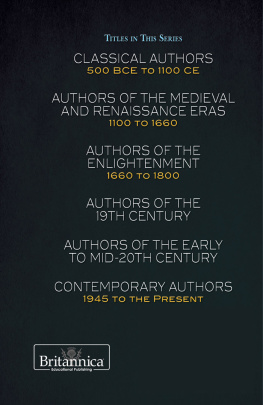ENGLISH LITERATURE FROM THE 19th CENTURY THROUGH TODAY
THE BRITANNICA GUIDE TO WORLD LITERATURE
ENGLISH LITERATURE FROM THE 19TH CENTURY THROUGH TODAY
EDITED BY J.E. LUEBERING, MANAGER AND SENIOR EDITOR, LITERATURE

Published in 2011 by Britannica Educational Publishing
(a trademark of Encyclopdia Britannica, Inc.)
in association with Rosen Educational Services, LLC
29 East 21st Street, New York, NY 10010.
Copyright 2011 Encyclopdia Britannica, Inc. Britannica, Encyclopdia Britannica, and the Thistle logo are registered trademarks of Encyclopdia Britannica, Inc. All rights reserved.
Rosen Educational Services materials copyright 2011 Rosen Educational Services, LLC. All rights reserved.
Distributed exclusively by Rosen Educational Services.
For a listing of additional Britannica Educational Publishing titles, call toll free (800) 237-9932.
First Edition
Britannica Educational Publishing
Michael I. Levy: Executive Editor
J.E. Luebering: Senior Manager
Marilyn L. Barton: Senior Coordinator, Production Control
Steven Bosco: Director, Editorial Technologies
Lisa S. Braucher: Senior Producer and Data Editor
Yvette Charboneau: Senior Copy Editor
Kathy Nakamura: Manager, Media Acquisition
J.E. Luebering: Senior Editor, Literature
Rosen Educational Services
Jeanne Nagle: Senior Editor
Nelson S: Art Director, Designer
Cindy Reiman: Photography Manager
Matthew Cauli: Designer, Cover Design
Introduction by Richard Barrington
Library of Congress Cataloging-in-Publication Data
English literature from the 19th century through today / edited by J.E. Luebering.
p. cm. (The Britannica guide to world literature)
In association with Britannica Educational Publishing, Rosen Educational Services.
Includes bibliographical references and index.
ISBN 978-1-61530-232-1 (eBook)
1. English literature19th centuryHistory and criticism. 2. English literature20th centuryHistory and criticism. I. Luebering, J.E.
PR451.E555 2010
820.9dc22
2010014261
On the cover: George Eliot (right) helped popularize the novel and Tom Stoppard continues to energize the stage and screen. London Stereoscopic Company/Hulton Archive/Getty Images (Eliot); Hal Horowitz/WireImage/Getty Images (Stoppard).
On page : An illustration from an early edition of Robert Louis Stevensons Treasure Island. Mansell/Time & Life Pictures/Getty Images
Pages www.istockphoto.com
CONTENTS



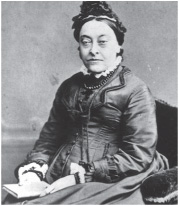







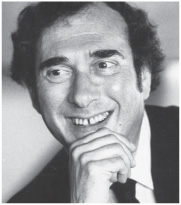
INTRODUCTION

T he history of English literature is itself like a well-written novel or drama. Events build on one another, as each new wave of writers impacts both the overall body of work and the subsequent efforts of other writers. There are unexpected twists and turns, as the styles and subject matter of English literature have sometimes rebelled against existing conventions or simply moved in unprecedented directions. Finally, as with any good story, the pace of action in English literature has seemed to accelerate over time, with the most recent two centuries representing an era of prolific productivity and creativity.
This volume explores representative authors and movements of the 19th and 20th centuries. Many beloved works of English literature have been produced in this period. Because this flowering of poetry, prose, and drama continues to the present day, readers of this book will come away with not just a sense of this literatures history, but an appreciation for the ongoing literary environment in which they live.
The modern era of English literature can be traced to the emergence of the novel as an all-conquering force in the literary marketplace during the reign of Queen Victoria (18371901). There is an image of Victorian times as dignified to the point of repression, but the mid-to-late 19th century actually represented a tumultuous era in British history. Great Britains rise to the stature of leading world power was juxtaposed with deepening urban poverty at home. During Victorias reign, an economic crisis in the 1840s, democratic reforms in the 1860s and 1880s, and growing demands for womens suffrage were all elements of a period marked by rapid, and sometimes wrenching, changes.
The emergence of Charles Dickens onto this scene roughly coincided with the beginning of Queen Victorias reign. For the next four decades, he was to capture the publics imagination with a wide range of works, including his first published novel, the comic Pickwick Papers; works with serious themes such as David Copperfield, Bleak House, and Hard Times; and a masterpiece from late in his career, Great Expectations.
Part of Dickens popularity stemmed from the then-new practice of serializing novels, which meant they were published in weekly or monthly installments. This approach lent itself to Dickens gift for creating a rich gallery of intricately crafted character studies. Most of all, his ability to combine humour with an unflinching look at some of lifes hardships and injustices made Dickens popular in his day, and also marked him as an enduring and important novelist.
While Dickens stands out in particular, there were other noteworthy novelists in this period. The late 1840s, for example, saw the publication of major novels by William Makepeace Thackeray, Elizabeth Gaskell, and Benjamin Disraeli (who would later become prime minister). This same period also saw first novels published by Charles Kingsley, Anthony Trollope, and the Bront sisters, Charlotte, Emily, and Anne.
Next page
